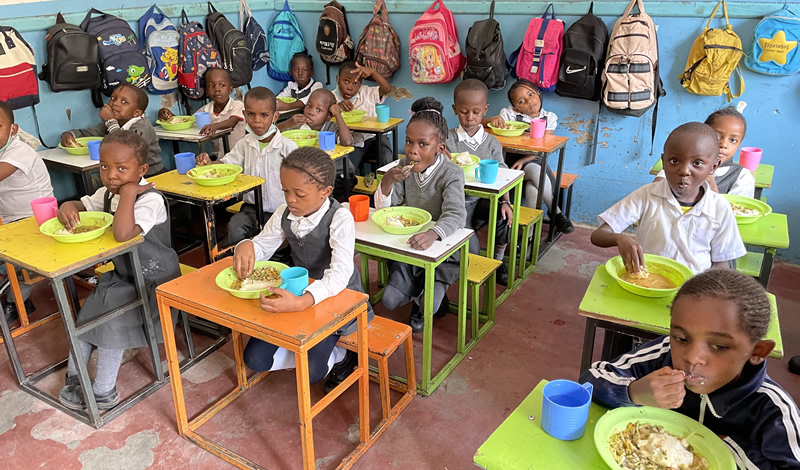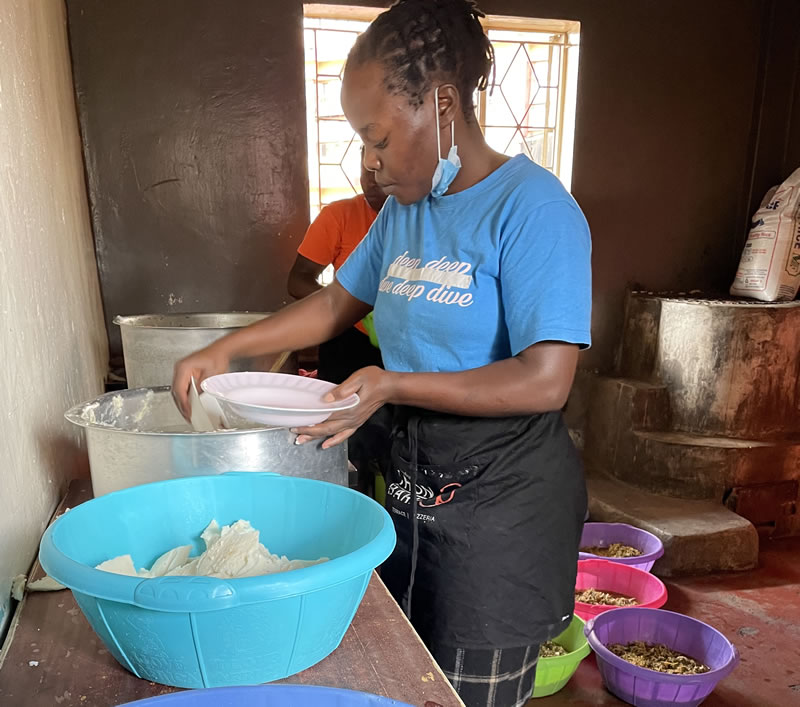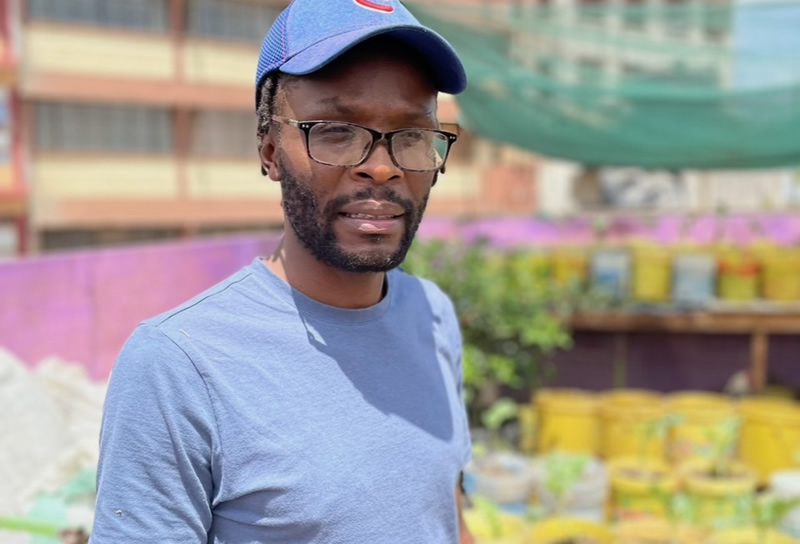
Food security is a vital part of the HOL mission. We serve each of our 162 students breakfast and lunch six days a week to help meet their basic needs. However, food costs are skyrocketing due to an ongoing African drought, COVID disruptions and the Russian war in Ukraine (Kenya imports 32% of its wheat from Russia and 94% of its soya from Ukraine*).
This is a nightmare for us,” states our Director, Sami Maina. “Prices are changing literally every day, making planning almost impossible. Things are so bad that we might have to think of reducing portions or dropping some items from the menu.”
Since January, HOL food costs are up:
- 70% for wheat and corn
- 60% for rice
- 45% for beef
- 116% for LPG used to cook
- 161% for cooking oil
“Not only are the prices high but food items are often out of stock,” explains Sami. “In general, our monthly costs have gone from about $1,100 per month to $1,450. Rising costs are also negatively impacting our families, making it more important than ever that we continue our food program.”
What are we doing about it?
Shopping smarter

Expanding our rooftop garden and chicken coops
Under Sami’s creative leadership, our rooftop garden and chicken coops were constructed in June 2020. Today, we have over 100 potted plants and 45 chickens. “It’s a wonderful learning experience for our students,” notes Sami. After all, it’s safe to say most HOL children have never witnessed the life cycle of a plant from seed through harvest.

“We grow primarily kales, onions and chards, Sami continues. “Last week, we also planted zucchini, cucumber and broccoli.” Successive planting is used, so as some plants are harvested, new ones are sprouting in other pots to take their place.
The best part of the outdoor teaching lab is the impact on our children. Instead of just viewing drawings of plants, they get hands-on experience. The children participate in each step: germinating the seeds, planting, watering and measuring plant growth each week. “The garden has become an integral part of our Hygiene and Nutrition curriculum,” explains Sami. “In fact, we are looking into vertical gardening to allow for further expansion.”
As for the chickens, they’re not only entertaining but also an important source of food. “We get about 20 eggs a day,” said Sami. “This enables us to provide a hardboiled egg to each child about three times a week. We also serve chicken on special occasions, such as graduation celebrations. It’s one of the children’s favorite meals, served with rice or chapati.”
Not to waste anything, the chicken manure is used as an excellent fertilizer for the plants.
Accepting donations
Last month, HOL received a generous donation of $3,600 from our Italian supporters Direttamente Onlus. Sami notes, “That was a big boost to our food program. We were able to purchase some things in bulk which helped to insulate us from rising costs for a bit.”
Would you like to help?
You can make a tax-deductible donation by clicking here. Just $50 would cover HOL’s food costs for a day or $350 for a week.